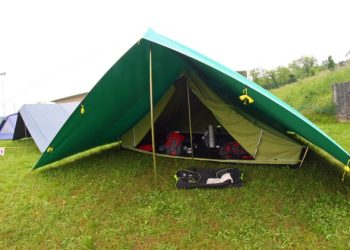Mount St. Helens, located in southwestern Washington, is one of the most accessible active volcanoes on earth. With its iconic peak visible from almost anywhere in the surrounding area, this stratovolcano has been drawing climbers from all over the world for decades. The volcano itself offers several climbing routes, including some that are perfect for those who have never climbed before or who lack experience with technical terrain. It stands at 9,677 ft tall and is classified as a stratovolcano (a cone-shaped mountain made up of layers of lava, ash, pumice and volcanic rock). It is part of the Cascade Range and lies just 50 miles south of Portland, Oregon. The mountain is best known for its major 1980 eruption.
The climate on the mountain can be quite different than what is found in the surrounding valleys. Climbers can expect cold, windy and wet conditions that change from day to day. There are four seasons of climbing at St. Helens which are spring, summer, fall and winter. The best season for climbing is during the summer when there is a slight chance of snow but not enough to impede your climb of St. Helens.
To get to the mountain, you’ll need to arrange for transportation and lodging. There are many lodging options in the area including hotels and campgrounds, but you’ll need to book them well in advance if you want to stay on or near the mountain. Basecamp is about an hour’s drive from Portland International Airport (PDX) and Seattle-Tacoma International Airport (SEA), which can be reached from the East Coast with a stopover in Denver.
One of the most popular ways to explore Mount St. Helens is to camp out and hike the mountain. This is a perfect way to spend a long weekend, and you can make arrangements for your camping trip at either of two USFS campgrounds in the area. There are also plenty of other lodging options available in nearby towns, so you won’t have any trouble finding accommodations that suit your needs. If you’re planning a St. Helens camping trip, here’s what you need to know! The best time to climb Mount St. Helens is from late July through September because it’s not too hot or cold and because these months offer the best weather conditions on the mountain. While comparing Manaslu climbing cost to that of Ama Dablam and Everest Climb, the cost highest mountain “Everest” is more.
The routes up Mt. St. Helens can be separated into two categories: the climbing routes on the east side of the mountain and those on the west side. Climbing routes on the east side are more popular and easier to access, but there are a few disadvantages when climbing from this direction. East-side climbs take longer because they’re steeper, and climbers need to use fixed ropes in spots because there are no natural handholds.
Conclusion
1980 eruption of Mount St. Helens and killed 57 people and caused millions to billions of dollars in damage.





